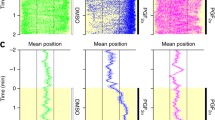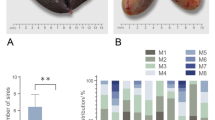Abstract
Although it is well known that responses to ethologically-relevant odors are influenced by endocrine factors, it has not been clear whether these hormonal effects might be mediated at the level of the peripheral sensory neurons. During an investigation of hormonal pheromones in South-East Asian Cyprinids, we observed that in adult male Puntius schwanenfeldi, an androgen-dependent sex character was correlated with electro-olfactogram response to a putative sex pheromone (15-keto-prostaglandin-F2α ). As secondary sex characteristics are androgen-dependent in male teleosts, this observation suggested a functional relationship between androgen and peripheral olfactory receptor response. We therefore investigated this possibility using androgen implants.
In laboratory-raised juveniles, androgen treatment increased the magnitude and sensitivity of electro-olfactogram response to prostaglandin without affecting responses to other odors. Furthermore, androgen-treated juveniles performed pheromone-dependent sex behavior in the presence of a prostaglandin-injected stimulus fish. For the first time in vertebrates, the present data demonstrate hormone-induced plasticity of primary chemosensory neuronal responsiveness to an ethologically relevant compound.
Similar content being viewed by others
Abbreviations
- EOG :
-
electro-olfactogram
- PGF :
-
Prostaglandin-F2α
- 15KPGF :
-
15-keto-prostaglandin-F2α
- 17,2 1P :
-
17,21 -dihydroxy-4-pregnen-3-one
- MT :
-
17α-methyltestosterone
- 11KA :
-
11-ketoandrostenedione
- 11KT :
-
11-ketotestosterone
- DHT :
-
5α-dihydrotestosterone
References
Bjerselius R, Olsén KH (1993) A study of the olfactory sensitivity of crucian carp (Carassius carassius) and goldfish (Carassius auratus) to 17 α ,20 β -dihydroxy-4-pregnen-3-one and prostaglandin-F2α Chem Senses 18:427–436
Breer H, Boekhoff I, Kreiger J, Raming K, Strotmann J, Tareilus E (1992) Molecular mechanisms of olfactory signal transduction. In: Corey DP, Roper SD (eds) Sensory transduction. Rockefeller Univ Press, New York, pp 93–108
Caprio J (1984) Olfaction and taste in fish. In: Bolis L, Keynes RD, Maddrell SMP (eds) Comparative physiology of sensory systems. Cambridge Univ Press, Cambridge London New York, pp 257–283
Cardwell JR, Dulka JG, Stacey NE (1992) Acute olfactory sensitivity to prostaglandins but not to gonadal steroids in two sympatric species of Catostomus (Pisces: Cypriniformes). Can J Zool 70:1897–1903
Davis MR, Fernald RD (1990) Social control of neuronal soma size. J Neurobiol 21:1180–1188
Dorries KM, Adkins-Regan E, Halpern BP (1991) Sex difference in olfactory sensitivity to the boar chemosignal, androstenone, in the domestic pig. Anim Behav 42:403–411
Dulka JG (1993) Sex pheromone systems in goldfish: comparisons to vomeronasal systems in tetrapods. Brain Behav Evol 42:265–280
Dulka JG, Stacey NE, Sorensen PW, Van Der Kraak GJ (1987) Sex steroid pheromone synchronizes male-female spawning readiness in the goldfish. Nature 325:251–253
Eisthen HL (1992) Phylogeny of the vomeronasal system and of receptor cell types in the olfactory and vomeronasal epithelia of vertebrates. Microsc Res Tech 23:1–21
Evans RE, Hara TJ (1985) The characteristics of the electro-olfactogram (EOG): its loss and recovery following olfactory nerve section in rainbow trout (Salmo gairdneri). Brain Res 330:65–75
Fernald RD (1977) Quantitative behavioural observations of Haplochromis burtoni under semi-natural conditions. Anim Behav 25:643–653
Ferrari MB, Zakon HH (1989) The medullary pacemaker nucleus is unnecessary for electroreceptor tuning plasticity in Sternopygus. J Neurosci 9:1354–1361
Firestein S (1992) Physiology of transduction in the single olfactory sensory neuron. In: Corey DP, Roper SD (eds) Sensory transduction. Rockefeller Univ Press, New York, pp 61–71
Firestein S, Werblin F (1989) Odor-induced membrane curents in vertebrate olfactory receptor neurons. Science 244:79–82
Hara TJ, Gorbman A (1967) Electrophysiological studies of the olfactory system of the goldfish, Carassius auratus L. I. Modification of the electrical activity of the olfactory bulb by other central nervous system structures. Comp Biochem Physiol 22:185–200
Hummel T, Gollisch R, Wildt G, Kobal G (1991) Changes in olfactory perception during the menstrual cycle. Experientia 47:712–715
Irvine IAS, Sorensen PW (1993) Acute olfactory sensitivity of wild common carp, Cyprinus carpio, to goldfish hormonal sex pheromones is influenced by gonadal maturity. Can J Zool 71:2199–2210
Komisaruk BR, Adler NT, Hutchinson J (1972) Genital sensory field: enlargement by estrogen treatment in female rats. Science 178:1295–1298
Le Magnen MJ (1952) Les phénomènes olfacto-sexuel chez l'homme. Arch Scient Physiol 6:125–160
Liley NR, Stacey NE (1983) Hormones, pheromones and reproductive behavior. In: Hoar WS, Randall DJ, Donaldson EM (eds) Fish physiology, Vol. 9b. Academic Press, New York, pp 1–63
Liley NR, Tan ESP (1985) The induction of spawning behaviour in Puntius gonionotus (Bleeker) by treatment with prostaglandin PGF2α. J Fish Biol 26:491–502
Mayer I, Berglund I, Rydevik M, Borg B, Schulz R (1990) Plasma levels of five androgens and 17 α -hydroxy-20 β -dihydroprogesterone in immature and mature male Baltic salmon (Salmo salar) parr, and the effects of castration and androgen replacement in mature parr. Can J Zool 68:263–267
Meredith M (1982) Stimulus access and other processes involved in nasal chemosensory function: Potential substrates for neural and hormonal influence. In: Breipohl W (ed) Olfaction and endocrine regulation. London/Oxford IRL Press, pp 229–236
Meyer JH, Zakon HH (1982) Androgens alter the tuning of electroreceptors. Science 217:635–637
Monti-Bloch L, Grosser BI (1991) Effects of putative pheromones on the electical activity of the human vomeronasal organ and olfactory epithelium. J Steroid Biochem Molec Biol 39:573–582
Moore A, Scott AP (1991) Testosterone is a potent odorant in precocious male Atlantic salmon (Salmo salar L.). Phil Trans R Soc Lond B 332:205–209
Nagahama Y, Hirose K, Young G, Adachi S, Suzuki K, Tamaoki B (1983) Relative in vitro effectiveness of 17α,20β-dihydroxy-4-pregnen-3-one and other pregnen derivatives on germinal vessicle breakdown in oocytes of ayu (Plecoglossus altivelis), amago salmon (Oncorhynchus rhodurus), rainbow trout (Salmo gairdneri), and goldfish (Carassius auratus). Gen Comp Endocrinol 51:15–23
Ottoson D (1956) Analysis of the electrical activity of the olfactory epithelium. Acta Physiol Scand 35:1–38
Pietras RJ, Moulton DG (1974) Hormonal influence on odor detection in rats: changes associated with the estrous cycle, pseudopregnancy, ovariectomy, and administration of testosterone propionate. Physiol Behav 12:475–491
Schmidt U, Schmidt C, Breipohl W (1982) Olfactory sensitivity changes during estrus cycle, gestation and lactation in mice. In: Breipohl W (ed) Olfaction and endocrine regulation. IRL Press, London, pp 323–332
Schreibman MP, Margolis-Nunno H, Halpern-Sebold L (1986) The structural and functional relationships between olfactory and reproductive systems from birth to old age in fish. In: Duvall D, Müller-Schwarze D, Silverstein RM (eds) Chemical signals in vertebrates, vol IV. Ecology, evolution and comparative biology. Plenum Press, New York, pp 155–172
Segovia S, Guillamon A (1993) Sexual dimorphism in the vomeronasal pathway and sex differences in reproductive behaviors. Brain Res Rev 18:51–74
Shepherd GM (1993) Current issues in the molecular biology of olfaction. Chem Senses 18:191–198
Silver WL, Caprio J, Blackwell JF, Tucker D (1976) The underwater electro-olfactogram: a tool for the study of the sense of smell of marine fishes. Experientia 32:1216–1217
Sorensen PW, Goetz FW (1993) Pheromonal and reproductive function of F prostaglandins and their metabolites in teleost fish. J Lipid Mediators 6:385–393
Sorensen PW, Hara TJ, Stacey NE (1987) Extreme olfactory sensitivity of mature and gonadally-regressed goldfish to a potent steroidal pheromone, 17α,20β-dihydroxy-4-pregnen-3-one. J Comp Physiol A 160:305–313
Sorensen PW, Hara TJ, Stacey NE, Goetz FW (1988) F prostaglandins function as potent olfactory stimulants that comprise the postovulatory female sex pheromone in goldfish. Biol Reprod 39:1039–1050
Sorensen PW, Hara TJ, Stacey NE, Dulka JG (1990) Extreme olfactory specificity of male goldfish to the preovulatory steroidal pheromone 17α,20β-dihydroxy-4-pregnen-3-one. J Comp Physiol A 166:373–383
Stacey NE, Sorensen PW (1986) 17α,20β-dihydroxy-4-pregnen-3-one: a steroidal primer pheromone which increases milt volume in the goldfish, Carassius auratus. Can J Zool 64:2412–2417
Stacey NE, Sorensen PW (1991) Function and origin of fish hormonal pheromones. In: Hochachka PW, Mommsen TP (eds) The biochemistry and molecular biology of fishes, Vol 1. Elsevier, Amsterdam New York, pp 109–134
Stacey NE, Sorensen PW, Dulka JG, Van Der Kraak GJ (1989) Direct evidence that 17α,20β-dihydroxy-4-pregnen-3-one functions as the preovulatory pheromone in goldfish. Gen Comp Endocrinol 75:62–70
Stacey NE, Cardwell JR, Liley NR, Scott AP, Sorensen PW (1994) Hormones as sex pheromones in fish. In: Davey KG, Peter RE, Tobe SS (eds) Perspectives in endocrinology. National Research Council of Canada, Ottawa, pp 438–448
Stumpf WE, Sar M (1982) The olfactory system as a target organ for steroid hormones. In: Breipohl, W (ed) Olfaction and endocrine regulation. IRL Press, London, pp 11–21
Thommesen G (1983) Morphology, distribution and specificity of olfactory receptor cells in salmonid fishes. Acta Physiol Scand 117:241–250
Vannelli GB, Balboni GC (1982) On the presence of estrogen receptors in the olfactory epithelium of the rat. In: Breipohl W (ed) Olfaction and endocrine regulation. IRL Press, London, pp 279–283
Wang HW, Wysocki CJ, Gold GH (1993) Induction of olfactory receptor sensitivity in mice. Science 260:998–1000
Wiley ML, Collette BB (1970) Breeding tubercles and contact organs in fishes: their occurrence, structure, and significance. Bull Am Mus Nat Hist 143:143–216
Author information
Authors and Affiliations
Rights and permissions
About this article
Cite this article
Cardwell, J.R., Stacey, N.E., Lang, S.L.C. et al. Androgen increases olfactory receptor response to a vertebrate sex pheromone. J Comp Physiol A 176, 55–61 (1995). https://doi.org/10.1007/BF00197752
Accepted:
Issue Date:
DOI: https://doi.org/10.1007/BF00197752




